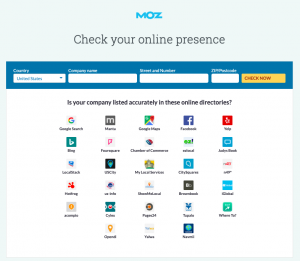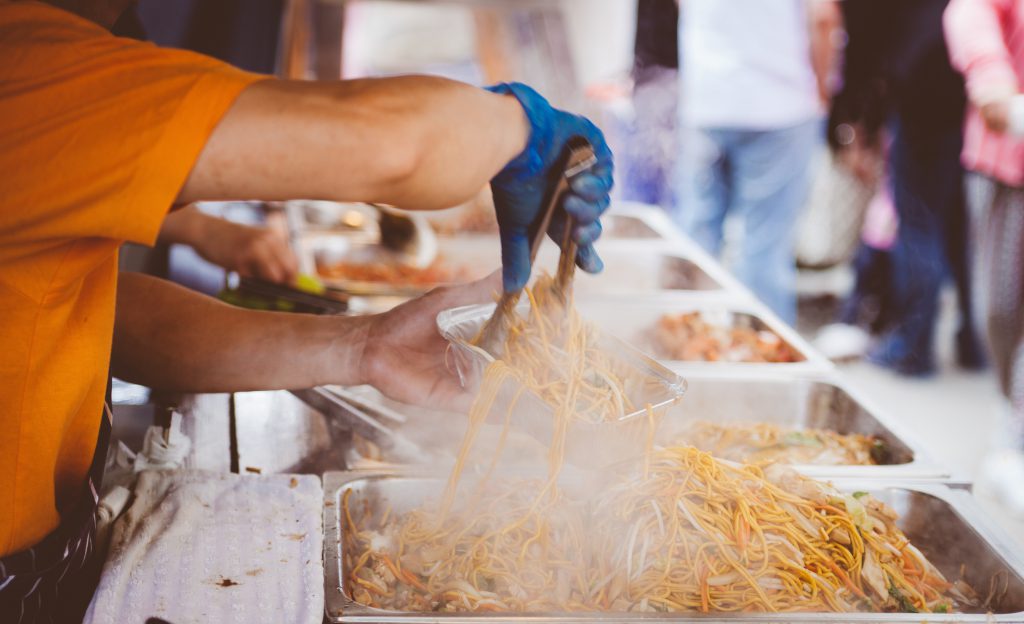Looking for new ways to improve your restaurant marketing efforts?
Here are 23 restaurant marketing hacks to increase sales, boost loyalty, and encourage repeat business. You might have already tried some of these and others might be completely fresh. Take a look and see what could work for you.
1. THE ULTIMATE CUSTOMER RETENTION HACK
Marketing gurus Gary Vaynerchuk and Jon Taffer offer practical advice on how restaurants can maximize customer retention and lifetime value. Taffer explains, “You have to market to three visits, not just one. This is the part everyone misses!” And Gary V demonstrates why using local social media “celebs” to promote your business “…is a no-brainer.”
Taffer breaks down the numbers. First, the cost of acquiring a new customer using traditional marketing is between $40 and $80.
He goes on to explain that if a new customer has a flawless first experience, the chances of him returning for a second visit is 40% higher.
If that same customer has a flawless second experience, his chances of returning for a third visit are about the same: 42%. And, if you can flawlessly serve your new guest for a third time, he’s coming back 70% of the time and “You own him.” So let’s talk about how to do that for less than $40 to $80 per customer.
Foot In The Door
At a full-service restaurant, on a dine-in customer’s first visit, you want to get them in the door for free. “Don’t make ‘em pay until the end,” says Taffer. Offer first-time customers a free dinner, or entree, or whatever you can afford. Once you get them in the door, do something to inform your staff that they’re a first-time customer. Taffer used a red napkin instead of white as an example.
Next, you want to “connect with them, work to get ‘em back a second and third time.” For example, ask your manager to give the customer a personalized note or business card at the end of his meal.
This personal touch connects and incentivizes a second visit, just make sure it’s of lesser value than the freebie you just gave him to show up. This wanes him off the discounts and the business card will also take the place of the red napkin on the second visit.
Repeat this process on the customers second trip to your restaurant. If you can execute this strategy through the third and final visit, you’ve got yourself a regular for only the cost of your food. Now let’s talk about a simple social media tactic Gary V uses to get big, cheap exposure with powerful impact.
Open Instagram, and if you don’t have it, GET IT. Search the top posts in your area. Ideally, you want to find someone that lives in your area, hits your demographic, has a large following, and is posting regularly. There are three dots in the upper right hand corner of their posts, tap that and send him or her a message.
Send something like “Alex, we see you’re in the area, and we’d like to offer you and a date a free entree. Come by anytime.” Alex thinks, “Whoa, awesome” and he grabs a date and heads to your restaurant. You give them the new customer treatment, and for the cost of two entrées you just reached a few thousand customers in your targeted demographic. Simple, cheap, and effective, “It will work.”, declares Gary.
The tactics and strategies here are practical and innovative examples of how to do this, proven by the worlds best. And they are ideas we can apply to our businesses today.
2. CURATED PHOTOGRAPHY
Quality photographs are a central component in restaurant marketing. Posting quality photos of dishes from your menu on your restaurant’s website and social media pages is key. Then, encourage patrons to take and share pictures of their own meals at your restaurant. Be mindful that food photography is not always easy. Have a professional come in and capture images of some of your favorite menu items.
Check out Mercer Tavern’s website for inspiration: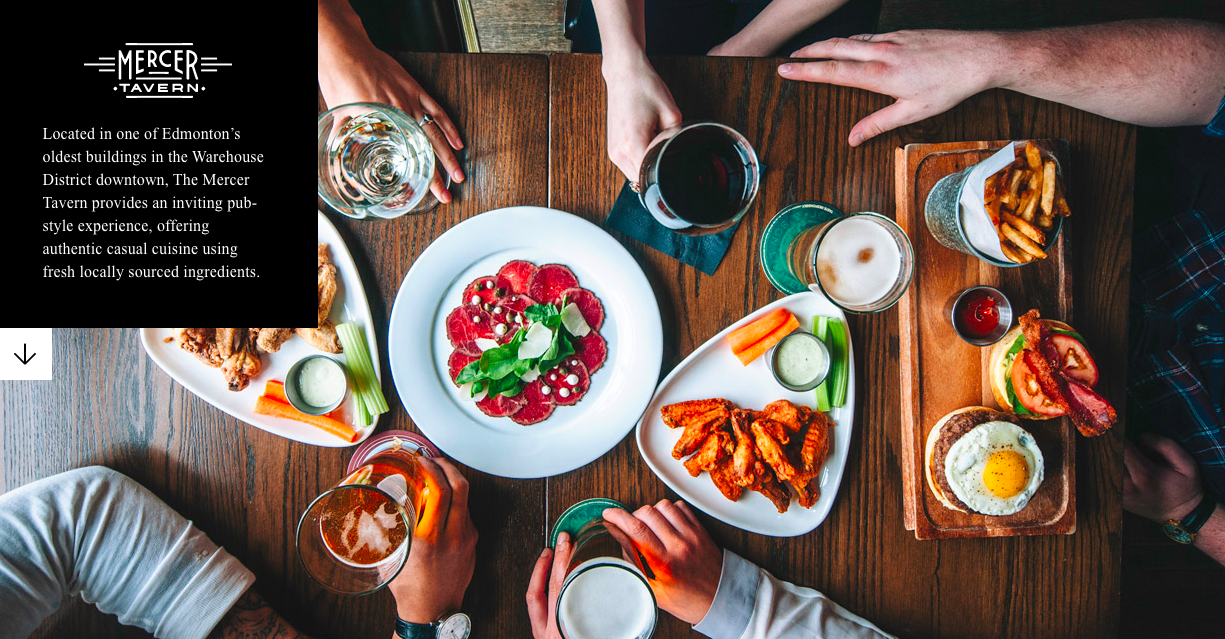
3. USE NETWAITER’S BROADCAST HUB TO REACH LOCAL CUSTOMERS
NetWaiter has an integrated Broadcast Hub, connected with Facebook and Twitter. Restaurants can use NetWaiter for free to post messages across multiple social platforms.
 This can provide solid traction for garnering and increasing sales. A six-month study concluded that website visits increased 23.3% on days when a restaurant made a post using their Broadcast Hub. Restaurants using NetWaiter’s premium services also saw significant increases in both the number of orders and the volume of sales. Additionally, restaurants saw a 37.7% increase in new users on days when at least one post was made using NetWaiter’s Broadcast Hub.
This can provide solid traction for garnering and increasing sales. A six-month study concluded that website visits increased 23.3% on days when a restaurant made a post using their Broadcast Hub. Restaurants using NetWaiter’s premium services also saw significant increases in both the number of orders and the volume of sales. Additionally, restaurants saw a 37.7% increase in new users on days when at least one post was made using NetWaiter’s Broadcast Hub.
4. USER GENERATED CONTENT IS GOLD
Given the amount of content that currently exists across all social media channels, you don’t need to reinvent the wheel. Your customers are already creating the content for you, in a more organic way, by sharing their own personal experiences on Instagram, Facebook, and Twitter. A survey by Forbes showed that 86% of consumers say authenticity is important when deciding what brands they support, and 60% say user-generated content (UGC) is the most authentic form of content. Identify customers who are authentic and supportive to your brand and try to incorporate them into your marketing strategies. It’s easy to find joy by energizing your customers to engage in your marketing process.
Ask them to post photos of their favorite meals at your restaurant, or photos from a night they brought in someone who had never been to your restaurant, or ask them to take a photo of the day their bicycle club had a group ride to your restaurant for Sunday breakfast. User-generated content is a great way to develop engagement with customers. Launch a photo contest, asking customers to share their favorite meal at your restaurant. Award the winners with a free appetizer or meal. It can easily make you and you restaurant more popular.
Here’s an informative video on how to make the most of user-generated content:
5. HOST A VIP NIGHT FOR LOCAL INFLUENCERS
Inviting local bloggers, press, and other media influencers can bring some high-profile attention to your restaurant. It can also give your staff a chance to put on a show, delivering a wonderful impression of your restaurant. This is a great way to tap into the local scene and score some cheap marketing (for just a few free meals), while accessing new niche audiences that may be otherwise hard to reach.
To find these influencers, try searching through related posts using geo-filters (i.e. Santa Monica) to narrow in on the top influencers to reach out to based on your location. Invite them to participate and even make it a joint-promotional event for their base of followers, which can help bring in new customers from the get-go.
Izea provides a great guide on how to engage restaurant influencers.
6. GROW YOUR EMAIL LIST BY ASKING FOR FEEDBACK
An email list is a wonderful way to stay in regular contact with your customers, send updates, and share new offers. Inviting customers for their feedback and signing up for special promotions are great ways to build up your list and boost restaurant marketing efforts.
When communicating with your list, make sure to keep the content fresh, concise, and always with them wanting more. Staff stories, behind-the-scenes photos, community involvement activities, and recipe inspirations are great types of content to build into your email campaigns, offering new angles and topics that will resonate with your customer base.
7. THE POWER OF BLOGGING
People love a ‘behind-the-scenes look’ at how things work. Starting a blog is a strong restaurant marketing technique and an excellent way to give potential customers the inside scoop on your restaurant. Post a larger piece once a week about a menu item, a recipe, or where you source your fish or vegetables. Then fill in the gaps with smaller messages or photos of employees or activities that you sponsor. Was your chef experimenting with new menu items one day? Take photos. Sometimes that’s all you need. Talk about seasonings and special ingredients. You’re not giving away high value secrets. Remember, your customers like you not only for your food, but for the convenience and atmosphere of your restaurant. Blogging will drive more traffic to your website and in turn, your restaurant!
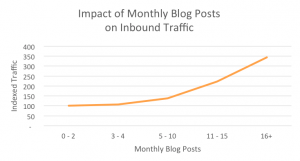
8. FOOD BLOGGERS ARE WAITING TO HEAR FROM YOU
An article about a Florida-based restaurant chain focused on how they doubled their online ordering at their restaurant in two months, from 2 to 3 percent of their volume to more than 5 percent. Some of what they did was just good sense. Other things were a bit more innovative. One of the things they did was to woo influential people. Food bloggers were invited for special events and private tastings. You can also win favor and garner attention by commenting, interacting, and guest posting to local food blogger sites. Most bloggers are inundated with a heavy content schedule and would appreciate a guest-post from a respected local restaurant that offers a fresh perspective and some insight into the day-to-day of running a restaurant.
9. VERIFY YOUR RESTAURANT’S ONLINE DETAILS
One of the other things this chain did was update their directory listings. Each store did a search of all the directories they were listed in, correcting erroneous info and made updates. Google algorithms like correct, consistent information. Click-through rates skyrocketed after that data was corrected and accurate. One of the most important listings for a restaurant is their site on the NetWaiter Network – NetWaiter’s customer-centric site that allows visitors to view local restaurant info, find locations that deliver to them, and get updates from their Favorite places.
You can use Moz’s online tool to check and update all of your listing:
10. THE KEY TO RESTAURANT MARKETING IS STORY TELLING
When it comes to converting sales, customers “buy” stories a lot more than they buy products.
Consumers want to feel close to the businesses they buy from. They want to know the story or the “why” of your business. This is where larger companies often drop the ball and where smaller businesses can thrive. Large companies often lose their personal story as they grow and get lost in profits. It’s great for the underdogs because it gives them a way to attract and retain customers that resonate with their brand.
Connection Is The Root Of It All
People are paying for connection and for emotion. It is emotion that drives people to make decisions, much more so than logic. Because most purchases are not strictly out of need, emotion has the ability to influence consumer behavior more than anything else.
Most purchases are out of want, the want or desire to experience something. The more emotional the experience, the more attractive the experience is to the customer. Telling your story is the perfect way to invoke more emotion and make deeper connections with your customers.
With social media, it’s easier than ever to tell your story. Whether you re-tell/re- create your story in an interview or podcast, or document your journey as an entrepreneur on the rise, you can easily and effectively build a connection your customers can get invested in that goes beyond the scope of your product or business. It’s here, using emotions, that inspire relationships that are much more expansive than a single purchase, particularly in restaurants.
Massimo Barutto, head chef and owner of the “World’s Best Restaurant”, (Osteria Francescana) said food is the “Transfer of emotions”. People are so passionate about food because of the emotions it brings them. The food in your restaurant tells a story, is an expression of yourself and your feelings. Massimo has told his story all over the world, in his restaurants, on YouTube, Netflix, social media, in food chronicles, and in his book “Never Trust A Skinny Italian Chef”.
How To Tell Your Story
Delivering his story in an effective way and executing a great product/experience for his customers has taken him to the top of the culinary world. And with all the media outlets one needs within arms-reach, you, like Massimo, absolutely should be finding a way to do the same. Tell your story.
Telling your story doesn’t have to be as difficult or complicated as getting on Netflix or writing a book. All you need to do is create a platform to reach your audience and deliver your story.
Using social media, to either re-create, re-tell, or document your story is the easiest way to do this. Your customers want to feel connected, want to feel what you feel. And communicating your experience, emotions, and passion through storytelling is one of the most impactful things you can do to be more successful.
11. OFFER FREE WI-FI
The longer customers sit at your tables, the more opportunity you give them to spend money at your restaurant (depending on your type of restaurant). Offering free wireless access to the Internet for those customers with a laptop or smartphone will add even more sales to the bottom line and make customers more loyal to your brand. Word spreads, too, like restaurant marketing magic.
There may be no such thing as a free lunch… but free Wi-Fi will get people talking. This is something that benefits all demographics, from college students, to millennials, to business people who need someplace where they can eat and do a little work.
Pro-Tip: Look into offering free Wi-Fi only to customers that “login” to your restaurant. There are systems that allow you to collect certain data points from customers (i.e. name and email address) who use your Wi-Fi and you can add them to your email marketing list in exchange for the free Wi-Fi you provide.
12. GET MOBILE
We live in a world that is constantly moving, and that means more and more people are deciding what and where to eat via their mobile device. This means if a tiny 3.5”- 4” window is the first door your customers “walk” through; you want that impression to be the best it can be.
Make sure your web developer (if you have one), or the services you use to display your website are using mobile-friendly, responsive designs. This may require some investment to update your site using these practices, but this is a step restaurants need to take in order to keep their restaurant marketing efforts relevant. Restaurants using their NetWaiter site as their primary website already have these types of capabilities, including a responsive site and web app with push-notifications.
13. THE RIGHT MUSIC
Another way to create an ideal environment for customers is by offering the right music. Search “music” and “restaurants” and pages upon pages of academic studies come up. The information is mind-boggling. The Bottom Line: softer, easy-listening music makes patrons comfortable and relaxed, keeping them in longer. Maybe your business formula is based on moving people through your restaurant quickly. If so, play something with an upbeat tempo.
14. POST A POLL ON SOCIAL MEDIA
It takes only seconds to make, and can be a great way to engage customers while creating an opportunity to align your offering with their desires. Open-ended questions like “What discontinued items would you like to see reintroduced on the menu?” or “What is your favorite seasonal item?” give customers a chance to contribute their views, while giving you relevant feedback to design a better experience for them. It also shows that you are always looking to evolve and learn, which will earn loyalty and respect, and is critical to increasing sales.
15. HOST SPECIAL EVENTS
Restaurant strategies can include one off events. For Example: a Spanish restaurant regularly holds special events focusing on specific aspects of their cuisine – tamale making, menudo sampling, etc. The events normally have a small charge. For instance, their tequila tastings are $25/person and are regularly sold out. The word-of-mouth these events create is priceless, plus customers tend to have a great time.
16. ONLINE ORDERING
Offer patrons the ability to order takeout and delivery from their computer, tablet, or smartphone.
PMQ Pizza Magazine revealed new data about online ordering: online ordering has an average customer retention rate of 95%. This means you can boost customer loyalty and sales with minimal effort by implementing an online ordering system.
The younger generations (i.e. millennials) are much more comfortable online, compared to talking with someone. That’s how they grew up, so it’s not hard to imagine why they flock to online ordering. It’s fast, easy, and helps people who constantly live on the go.
17. SET UP A GOOGLE BUSINESS LISTING
A Google business profile allows customers to see your restaurant’s location, category, hours, contact information, reviews, popular times, and images. Your restaurant will also be shown on Google Maps, where customers can click to your website. Claiming your business on Google is a simple and effective way to validate your business and get potential customers in the door.
Google My Business and local search are two of the best ways for customers to find a restaurant and information about a restaurant as soon as possible. According to the findings of xAd and Telmetrics, mobile search has a conversion rate of nearly 90 percent!
Moreover, 64% of searchers with smartphones convert within an hour of their mobile search activity. Restaurant consumer activity is much more locally driven and far more urgent. By managing your restaurant’s business listing on Google, you are immediately making your information accessible to current and potentially new customers. Getting started is as simple as…
– Adding your Name, Address, and phone number,
– Uploading high-quality photos of your restaurant and menu items
– Responding to any online reviews,
– Double-checking that your location is displayed correctly on Google Maps,
– Writing out a brief business description.
18. SET UP A YELP PROFILE
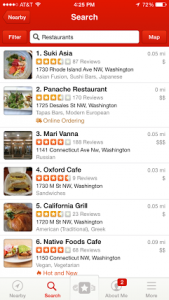 84% of people trust online reviews as much as friends, and nowhere is this more true than the restaurant industry. This is why it’s important that your Yelp reviews are helping customers make the decision to select your business. Make sure your profile displays accurate and positive information about your restaurant. Be sure there is a selection of beautiful pictures and reviews from loyal customers and stay up to date with pertinent business information such as updated menus and your hours of operation.
84% of people trust online reviews as much as friends, and nowhere is this more true than the restaurant industry. This is why it’s important that your Yelp reviews are helping customers make the decision to select your business. Make sure your profile displays accurate and positive information about your restaurant. Be sure there is a selection of beautiful pictures and reviews from loyal customers and stay up to date with pertinent business information such as updated menus and your hours of operation.
Not only are Yelp and other review sites a platform for you to display your business and attract potential customers, but it’s also a well for feedback from customers. Investing in your online review pages will help you understand your market and reach them more effectively, with minimal effort or cost.
19. TEAM UP WITH AN INFLUENCER
Around 38% of marketers call affiliate marketing one of the top customer acquisition methods.
You’re looking for someone who posts actively on Facebook, Instagram and/or Twitter. For your restaurant’s influencer, you can create a  one-time-only discount code they can share to their followers (i.e. the coffee shop next-door wants to support your donut shop, so they provide a code ‘DONUTS4U’ to encourage customers to buy baked goods from your restaurant).
one-time-only discount code they can share to their followers (i.e. the coffee shop next-door wants to support your donut shop, so they provide a code ‘DONUTS4U’ to encourage customers to buy baked goods from your restaurant).
The discount code would obviously only be used by those who are engaged with that influencer, and makes tracking the conversions easy. Going this route also allows you to bring onboard multiple influencers to your affiliate program. Again, like the food blogger, you can offer a commission of the restaurant sales for every discount used.
20. SIMPLE PROMOTIONS
Create a special your customers will appreciate. The special could be an add-on to a current menu item or a seasonal item that has limited availability. Discounts and coupons are the top-ranked promotional tactics for driving loyalty with 61% of consumers saying they use them. Creating specials that draw in customers will increase your chances of retaining them.
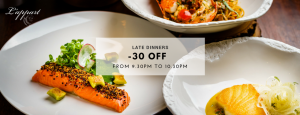
21. BE MINDFUL OF EMOTIONS
Emotions are the precursor of action. Have you ever wondered why you can get so happy, sad, frustrated, or upset as the result of someone else’s behavior? Do you recall a time when you felt too stressed to make a decision? Your emotions are a powerful tool when it comes to buying and making purchases. They are a result of past experiences and memories  being triggered by an external factor.
being triggered by an external factor.
Research on advertising shows that the emotional response to an ad is the greatest influence on a consumer’s intention to buy. When an emotional marketing strategy or campaign is successful, it primes a customer’s memory – which can trigger a purchase. You can increase your restaurant profits by leveraging the insights from emotional marketing. Here’s how…
The Real Deal
Emotional marketing has to feel honest, real, and authentic to the customer in order for it to work. To do this, you need to know your audience and customers, and have a strong brand identity. When people are inspired, they often think or act differently. Over 65% of people that feel an emotional connection to a brand, say it’s because “they care about people like me.” Neuro-imagery scans show that when consumers evaluate brands, they rely on their emotions more than facts. When you’re working to create your next marketing campaign, consider how you will connect to your customer emotionally, versus intellectually.
Confidence is Key
Emotional marketing helps build a customer’s self-esteem, individuality, and personal choices. When a brand connects to their customers on an emotional level, they are more likely to become attached to the brand. You get them, and they get you. This is why emotional marketing is so genius. When effectively accomplished, the marketing strategies don’t feel like marketing at all. Advertisement and marketing components will start to feel familiar and comfortable to customers.
Love to Love
A marketing strategy focused on appealing to consumers’ deep and most personal emotions can turn a company or brand that no one knows about into a brand customers care about. Scientists have uncovered that humans feel first and think second. When confronted with sensory information, the emotional section of the brain can process the information in one-fifth the time the cognitive section requires.
Even when companies aren’t intentionally trying to pull on the heartstrings of their customers, customers will still engage their emotions when it comes to making that final purchase. To maximize the most out of a marketing campaign, define how your company’s product will help improve your customer’s life by making it easier, better, and more joyful.
According to Entrepreneur magazine, branding is “The marketing practice of creating a name, symbol or design that identifies and differentiates a product from other products.” Emotional branding then, is creating an emotional connection to one company that separates it from the rest, creating brand loyalty over time.
22. ASK THE BIG QUESTION
Restaurants are no different than any other business. They typically fail to ask the #1 marketing question: “How did you find out about us?”
This is the most important piece of information for making informed decisions about how and where to advertise. You need to know from where your customers are coming so, 1) You can exploit those sources even more so, and 2) So you can be aware of places you are overlooking in your promotional efforts.
Here’s a prediction of what you will find: Seven or eight out of every ten people will tell you they heard about your restaurant from someone else, which is more commonly known as word-of-mouth marketing. This is why you need to make sure that every customer leaves satisfied, ready to tell everyone about the great restaurant they just ate at.
If They Don’t Tell You, You Won’t Know
If a customer has a bad experience, bend over backwards to make it right. People are much more likely to relay a bad experience to friends than a positive one, which makes it all the more hazardous for your reputation because they can tell everyone about it online.
But, what about those other 20% or 30% that come from someplace other than word of mouth? Where did they hear about your restaurant? Let’s take a look at some of the traditional advertising outlets, as well as some of the not so traditional.
Before evaluating advertising opportunities, it is important to know who your customer is. Do you cater to the baby-boomer crowd? They get their information much differently than other demographics. Baby boomers still read newspapers, whereas younger people barely look at anything in print, if at all. Most of their information comes from the internet.
There are a few exceptions to this rule. Small-town weekly newspapers, especially from cities that have an identity (a college town or a tourist destination) get a more loyal readership. These towns are more close-knit. People look at the newspaper for local gossip and other news.
If your customers are younger; Millenials, Gen-X, or Gen-Y, you need to look in other places. If your traffic includes commuters on their way to work in the morning or looking for lunch, then signage is important. People need to see you. Sidewalk signs or window signage that is easily noticeable could be important.
Get Outdoors
Moving on from signage, we come to outdoor advertising. This ranges from billboards to bus stop signage, to whatever is available that will attract the eye of a potential customer. Are you a few doors down on a side street from the local commuter train depot? Check out what advertising opportunities are in that depot. Maybe it’s just a matter of parking your restaurant van in a conspicuous spot. Be creative in how you get commuters to become aware of you.
Billboards on freeways and highways can be expensive, but surface street billboards around town are often more reasonable. Technology has also brought us electronic billboards where your ad rotates with several others. Again, these can sometimes be more reasonably priced.
Be Creative
Look for special opportunities. Many suburban towns now boast minor league athletic teams. Baseball and ice hockey are very popular, but there are others. The promotional opportunities are endless, from billboards in the outfield, to special announcements, to logos on jerseys. It’s a captive audience. If you cater to the sports bar crowd, this could be a good venue for you.
The internet offers a host of opportunities. It’s important to make sure your restaurant comes up in local search when someone types in their location, or is looking for a specific cuisine. Using an SEO expert can help you achieve this. Ask around and get referrals before you retain someone.
Routinely check Google and other search engines. You want your restaurant to come up as high as possible. One way you can do this is by registering on as many restaurant directory sites as you can find.
In addition to the restaurant sites, also search for local business registries. Is there a convention center in your town? Chances are they have a registry on restaurants. See what it takes to get on it.
You should also routinely Google your own restaurant to see what comes up in the search results. Did you get a less than stellar review? It happens. Try reaching out to the reviewer. Ask them about their experience and what you can do to make it right. Sometimes all that person wants is someone to listen to their complaint. If a complimentary meal gets rid of a negative complaint, then it’s worth it.
Additional tips:
- Constantly monitor the results you are getting from each source. Many advertising and promotional platforms have a life span. They work great for a while, but then the law of diminishing returns kicks in. People become immune to your message. You either need to change something about your campaign (new visuals, a different offer, etc.) or you need to move on to the next thing.
- When doing display ads – keep in mind that pictures say more than words. Photos of sumptuous dishes attract attention and motivate people to act.
- Everybody is a photographer today with cellphones and tablets, but seriously consider a food photographer. Good photos, compared to just mediocre ones can make all the difference in the world.
- Offering online ordering is another way to attract customers, both making good customers better ones, and reaching out to new customers. Multi-restaurant portals may allow you to reach more people, but the real gold is in a branded online ordering system that you can control. The best ones can be customized to your website.
- You might consider special offers to attract customers, but don’t fall into the trap of discounting too much. You’ll only train your customers to come when the specials are offered.
23. CREATE A LOYALTY PROGRAM
Loyalty programs for companies have been around for years and while they come in all different shapes and sizes, they are a core component to restaurant marketing.
Some programs are created in such a way that customers have to collect a certain number of ‘points’ to unlock a special reward, or maybe they “buy-in” to a particular program to gain access to additional options (i.e. Amazon Prime).
For restaurants, loyalty programs are a simple way to say “Thank You” to customers and keep them coming back for more. If a customer loves your restaurant, give them something to motivate their return. Studies show that 64% of brands have seen an increase in loyalty program membership in recent years. Rewarding your most loyal customers will help you attract more customers to your restaurant, who will then spend more often. Let’s take a deeper look as to why you should launch a loyalty program, particularly using software that will help you best manage the information.
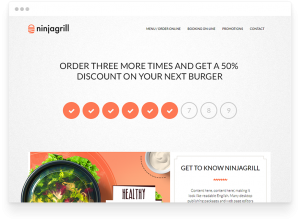
Increases Sales
Using an online tool where you can simply plug in a loyalty rate for customers will quickly help boost sales since it will encourage customers to order again. Being able to choose the loyalty rate and the total amount a customer can redeem gives you – the owner – control as to how you want the loyalty program to be managed. From a customer’s perspective, they can immediately see their loyalty balance increase as they order each time. Once they reach the minimum redemption amount, they can then choose to redeem their loyalty rewards with a single click. By having a system in place, where customers can easily collect rewards on each purchase and then easily redeem the benefits, will pay off in the short run and long run.
Easy to Implement
Don’t make customers jump through hoops to get rewards. Equally important is to provide customers a clear idea of the benefits they will receive. Your goal is to motivate customers to spend more at your restaurant and spend more frequently. When attempting to change a customer’s buying habits, it’s critical they understand the benefits involved and how easily they can capture those benefits.
With the example above, restaurants can establish their loyalty program by creating a loyalty rate for orders and a minimum redemption amount customers need to accumulate before redeeming their loyalty balance. By setting a minimum redemption amount, customers are motivated to order again and again. There are tools available that make launching such a program quick and easy. The most important aspect to launching a loyalty program is finding one that works for you and sticking with it. You will need to evaluate the data as it comes in to find out the best approach to attracting and retaining customers.
Each restaurant’s definition of success can differ, so prior to launching a loyalty program, decide what is most important to you and stay consistent with the offer given to your customers. Most importantly, make sure your loyalty program is easy to implement and easy for customers to understand.
Inexpensive Marketing Tool
About 71% of consumers decide to join a loyalty program based on discounts and around 63% join for free products. These are the top two most attractive rewards. Instead of just picking a random number to decide how much you would like to give back to your customer, find a value that would be meaningful to them, while also determining what is profitable for you.
For example, if a restaurant sets a 10% loyalty rate and a $5 minimum redemption value, customers will accumulate a 10% reward on each order and be eligible to redeem their loyalty balance after they accumulate $5 in loyalty rewards. So, after ordering $50, they could redeem $5 off their next order. This customer-purchasing effort doesn’t cost the restaurant anything unless a minimum amount of purchases are made.
Boosts Awareness
The real value of a loyalty program is its ability to sustain engagement with valuable customers. The more loyal your customers are to your brand and the more they purchase, the larger the reward is for them in the end. Find a way to make your loyalty program experience as easy as possible for those purchasing so they know the amount of rewards they are collecting. By using a system that automatically keeps track of this information for them (and you), you will find a more positive and fruitful relationship with your customers. Raising awareness about your loyalty program does not stop once customers start using it.
Customers will need gentle reminders about their rewards to 1) continue to spend and 2) to redeem their rewards. Over 51% of U.S. consumers are loyal to brands that interact with them through their preferred channels of communication, so use a service that will allow you to communicate via mobile, email, and web – all at the same time.
Assists in Collecting Customer Data
When it comes to data collection, loyalty programs are a great way to keep track of customers who provide the best ROI to your restaurant. By giving back to your customers, you will draw in new customers who want to buy from your restaurant. Additionally, when you know what your customers want (based on their ordering preferences, frequency of orders, total order amounts, etc.), you can begin to create a program that makes sense to them. This will help you make the most of your loyalty program to drive business.
Conclusion
Have fun with it – there is no one-size-fits-all process for restaurant marketing. Just as your restaurant is unique, so too should your tactics be to getting more people into the door. Just remember to iterate and keep trying, listen earnestly to the feedback of your customers, and watch closely to see what is working. It will be a constant evolution, but hopefully the beginning of a new chapter of growth for your restaurant!
– The NetWaiter Team


